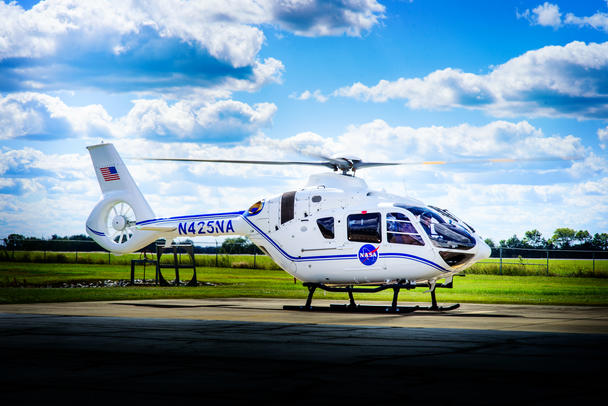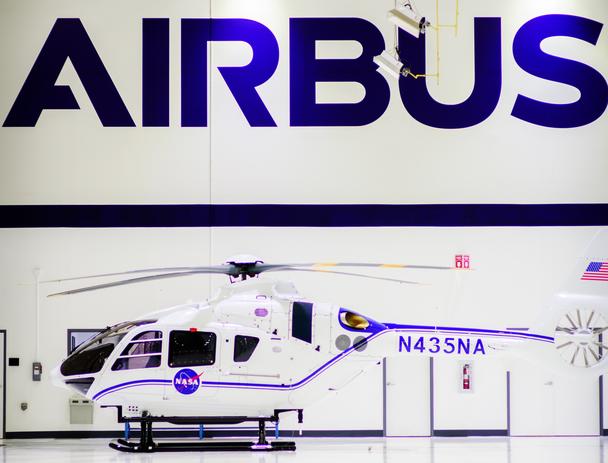Airbus Helicopters helps to drive space exploration

Airbus helicopters might not be flying to space, but they are supporting some of the most critical space missions from Earth.
The National Aeronautics and Space Administration operates three Airbus H135 helicopters, which are based at the Kennedy Space Center in Florida. The storied space exploration agency uses the aircraft for a variety of missions, including aerial security at rocket launches, emergency medical services, research and qualified passenger transport.
Here’s a look at how Airbus Helicopters fits into NASA’s operations.
Future of space travel
Airbus helicopters play a critical role in the future manned space travel.
The H135s are supporting efforts to prepare for and execute Artemis, a program to return astronauts to the moon by 2024. Artemis is expected to land the first woman on the moon.
In addition, one H135 escorted the cars transporting members of SpaceX’s Crew Dragon to the historic launch pad at 39A, where it departed for the International Space Station last year.
And an Airbus H225 helicopter brought NASA astronauts back to dry land following the splashdown of the SpaceX Crew Dragon capsule in the Gulf of Mexico after an 18-hour flight from the space station. Longtime Airbus Helicopters customer Air Center Helicopters, Inc., headquartered in Texas, operated that aircraft.

Why the H135s
NASA selected the H135 for its performance, capabilities and ability to meet its wide-ranging needs.
The aircraft’s twin-engine was a major selling point, as missions often require teams to fly over the Atlantic Ocean. The H135 allows NASA to fly 20 to 25 miles offshore safely, whereas the agency’s previous single-engine aircraft could only go about a mile.
The new aircraft are also instrument flight rules (IFR) capable, which means they can fly directly into clouds. With this expanded capability, Flight Operations can fly injured personnel to the hospital, even in unfavorable weather conditions — instead of relying on ground operations. The H135s also have built-in mounts for medical equipment to support any hazardous evacuation missions.

Additional duties
The helicopters play a key role in monitoring the Kennedy Space Station, which spans more than 140,000 acres.
The H135’s upgraded camera system includes an infrared camera, allowing security teams to see at night and better see through vegetation. The camera platforms are quieter and more stable, providing better-quality photos and the capability to live steam events to teams on the ground for viewing.
The helicopters also support bio-research efforts. As Kennedy shares its borders with the Merritt Island National Wildlife Refuge, Flight Operations sometimes flies biologist to count fledging eagles. The upgraded cameras on the H135s allow teams to zoom in on eagle nests, eliminating the need to get close to the nests in order to perform these counts.
Support
NASA also signed a support contract for up to 10 years, with Airbus Helicopters Inc. providing two pilots, two mechanics and one program manager onsite at Kennedy Space Center to perform scheduled and unscheduled maintenance on the aircraft.
